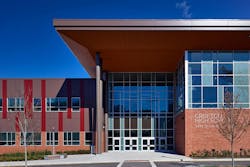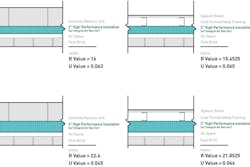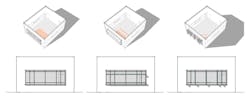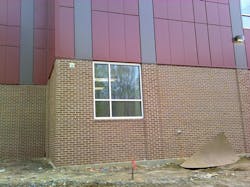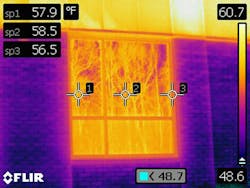At GWWO, the evaluation of the building envelope starts early in the design process. We believe that an interdisciplinary approach to design is inclusive of building systems and is essential to responsible building design. We begin by reviewing the owner’s project requirements for the building systems: envelope, mechanical, electrical, and plumbing, etc. We then discuss the integration of these systems to establish the project’s Energy Use Intensity (EUI) goal, which is a calculation of a building’s energy use as a function of its size. Early analysis is essential to properly establish these goals for building performance. Using Sefaira, a software that allows us to perform simple-box energy modeling early in design, we hone the envelope design in conjunction with the systems. We study building orientation, glazing types, location, and shading, wall types, and insulation values. These studies allow us to surpass designs that only meet code minimums and ultimately save overall project costs.
For example, at Old Mill West High School in Millersville, MD, early analysis of wall types helped the project team determine that increasing the cavity wall insulation by one inch would reduce the mechanical plant size.
Additional early envelope studies analyzing glazing performance, window to wall ratio, and shading options for classrooms depending on orientation are impactful in evaluating the efficiency of building systems and the quality of the space for the users.
Building Envelope Commissioning (BECx) can provide an added level of quality assurance for the envelope design and construction as the design progresses. BECx is a performance-based approach that ensures the construction of the building envelope meets the design intent. A building can be detailed perfectly, but a failure during installation could affect performance for the entire life of the building. BECx typically focuses on the four major control layers: water, air, vapor, and thermal. The scope of BECx can be edited to the owner’s preferences or to meet the requirements of codes or rating systems (LEED v4 or IgCC) if being pursued. BECx usually begins during the design development phase and continues through construction. The scope of work can include reviewing details, specifications, and shop drawings; defining performance expectations; performing quality assurance site inspections; and conducting functional testing. Depending on the project requirements, the BECx can be performed by the architect, a consultant contracted by the owner, or an impartial sub-consultant on the design team.
At GWWO, we have a building envelope consultant on staff, who is also a construction specialist, and serves as a staff resource for projects during design and construction. He performs envelope and specification reviews, conducts field inspections to meet our IgCC projects’ requirements, and produces educational content to maintain staff expertise in the rapidly changing world of envelope design and construction.
Successful building envelope design requires early analysis and close collaboration with the design team and the client. Small improvements can collectively impact the overall building and system performance. The integration of BECx into the project can provide added benefits to the client in both design and construction phases. This quality assurance process can assist in achieving sustainable design goals in LEED and IgCC, and limit issues caused by installation resulting in the building truly performing as designed.
About the Author
GWWO
At GWWO, we are architects, thinkers, wonderers, creators, partners, collaborators, debaters, and questioners. It is in this spirit—and based on our desire to engage, share, and discuss—that we blog. Our intent is to bring you news from the industry and our cultural and educational markets, to discuss our point of view, to pose thought-provoking questions, and to engage in discussion with our readers. We invite your suggestions, questions, and comments and look forward to an open and lively dialogue. Visit our blog site, and follow us on Facebook and LinkedIn.
